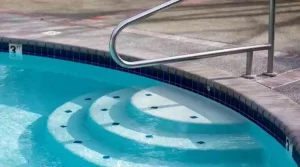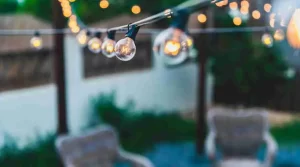No matter where you live or how often you use your pool, it’s important to keep it in good shape. Maintenance can include anything from cleaning out the pool to balancing the chemicals in the water or taking care of the pool’s equipment. Your pool requires attention. Even though you already have a lot to do this weekend, cleaning and maintaining your swimming pool should be your top priority.
We’ve put together all the life hacks you need to know to make it easier to take care of your swimming pool, whether it’s in-ground or above-ground. We also list the most common mistakes people make when taking care of their pools. Don’t do any of these!
Here’s the skinny…
MUST HAVE POOL MAINTENANCE PRODUCTS
At Baltimore Swimming Pool Pros, we make it easy and quick to start taking care of your pool by starting it on E-Z Pool. Why? No one wants to be a chemist on the weekends, because no one wants to be a chemist on the weekends. With these things, you don’t have to guess or measure out multiple products to get clean water. It’s just simple.
MAINTENANCE SCHEDULE WEEKLY
- Check the level of the water to make sure the pump can work well.
- Check the pH of the water and change it if necessary.
- Check to see how much chlorine is in the pool water.
- Check and adjust the level of acidity
- Check the levels of oxidizer and stabilizer and make changes if needed.
- Check the water in the pool to see if it is clear and if algae are growing.
- Remove any leaves or other debris from the bottom of the pool, the skimmer basket, and the water’s surface.
- Add the right amount of chlorine once a week or oxidize the pool with one scoop (1/2lb) of E-Z POOL for every 10,000 gallons of water.
- Check the pressure on the filter and backwash if needed.
- Using E-Z Pool + Revive! No chock should be needed weekly. If not, you should shock the pool at least once every two weeks to get rid of pollutants and clear up the water.
MONTHLY
- Test and balance the pool as needed.
- Check the calcium hardness and make changes as needed.
- Check the total alkalinity.
- Wash the filter.
- Check the pump and filter to make sure they work well.
- If your pool has a liner, check it for holes and tears and fix anything that needs fixing.
- Check for cracks in your concrete, gunite, or fiberglass pool.
- Check all the other pool equipment, like ladders, handrails, diving boards, etc., to make sure nothing is loose and everything is working right.
HOW TO TAKE A WATER TEST
Testing the water is one of the most important things to do when you have a pool. There are four main tests that need to be done:
- pH
- Chlorine
- Total alkalinity
- Calcium hardness
Even though most people probably won’t test their pool every day, it is recommended that you do so at least once a week. This will help make sure that the water in your pool is clean and healthy.
TEST STRIPS & KITS
Test strips are the easiest, quickest, and least expensive way to check the water in your pool.
- Dip the test strip into the water and move it around for about 30 seconds.
- Then, look at the colors on the bottle and the test strip.
Even though these are the easiest to use, they are usually the least accurate.
There are test kits for digital devices. These kits are popular with health departments because they are easy to use. Even though they cost more, these are the most accurate kits for testing the water in your pool.
Lastly, there are test kits with reagents that you drop into a sample of water. For accurate color comparisons, these kits rely on the tester’s eye.
BALANCING PH
How acidic or basic the water is is measured by the pH. Human bodies have a pH of 7.2. This could be the last reason why this song is also great for the pool. When the pH of water drops below 7, it becomes acidic. Everything above 7.0 is alkaline.
- LOW pH PROBLEMS
- Low pH can cause your liner to dissolve, corrosion of all the metals in your pool (ladders, rails, pumps, filters, valves, etc.), stains from the rusting metals, and rapid loss of chlorine, which means you have to use more and more, and dry, itchy skin.
- HIGH pH PROBLEMS
- High pH can cause scaling or calcium buildup on the pool’s walls, waterline, and accessories, dull or cloudy water, clogged filter medium or elements, dry, itchy skin, and a drop in chlorine’s ability to kill algae.
- KEEPING pH BALANCED
- Use E-Z Pool and Revive! Each week make sure the pH is right. If you use these items every week and don’t get a balanced pH when you test, call (800) 407-9964 or send an email to [email protected].
POOL CLOSING AND OPENING
- Annual winter closing and opening of the pool
- Adjust the pH, total alkalinity, and calcium hardness levels in the water.
- Run the filter for about 24 hours straight.
- E-Z Pool Winter Dosage: 1 pound (two scoops) per 5,000 gallons. For the best results, you should run the pump for 30 minutes before you close.
- Make sure you’ve drained all of your pipes and pool plumbing, since water expands when it freezes and can cause your pipes to burst. You can use a shop vac or backwash the pool filter to blow the water out of these pipes.
- Lower the water levels to keep them from freezing, and blow out the lines to get rid of any extra water.
- Clean the pool completely by vacuuming and taking out all the trash.
- Take out the skimmer baskets, ladders, and other pool equipment that is outside.
- Cover your pool for the winter or for safety.
- As needed, add air pillows to your pool walls to protect them, and as needed, use a cover pump.
ANNUAL SPRING OPENING
- Net the leaves and pump the water off the pool cover.
- Take off the top of the swimming pool. Clean and fold the pool cover before putting it away.
- Add E-Z-Pool per the instructions on the bucket.
- Fill up the pool with water and turn on the pump.
- Start the pool pump when the water in the pool is 3/4 of the way up the skimmer hole. Your pool filter should be in the rinse position for about 30 seconds before you switch it to the filter position.
- Net any leaves or other debris from the swimming pool. If the pool is dirty, it should also be vacuumed.
- Brush the walls and floor of the swimming pool.
- Instead of shock, put Revive! in the pool.
- Turn the pool pump on for 24 to 48 hours. – Keep the pump running so that all of the water in the pool goes through the filter. This cleans the water of any bacteria and makes it safe to swim in.
- Now that the water has gone around the pool, you can vacuum it if you want to.
- Check the pH of the pool water. Use test strips to check the pH of the pool water and make any needed changes.
- Follow the directions to backwash the sand filter or clean the DE or cartridge filter.
COMMON MAINTENANCE MISTAKES
MISTAKE #1: DRAINING THE WATER
Don’t take out more than one-third of the pool’s water. When you drain a vinyl-lined pool, the liner can dry out or shrink. This would cause a lot more problems than it would solve, and you would usually have to replace the liner. It might seem like a good idea to drain your vinyl liner pool when you open it for the summer, but you can do all the cleaning and maintenance you need to do with the water still inside. Just use your Reviv!
MISTAKE #2: NOT MONITORING THROUGHOUT THE SEASON
So you did everything you needed to do to get your pool ready for the summer, but you haven’t tested the water in two months. Unfortunately, water testing is an important part of pool maintenance and must be done at least once a week; if your pool is used almost every day, you should check the water twice a week. You might need to add more chlorine or E-Z Pool + Revive Weekly and bring the pH back into balance, among other things that depend on your pool. Regular water tests will make sure that your pool water stays clean and clear all season.
MISTAKE #3: Turning off your pump.
When your pump is turned off and there is no water moving in your pool, bacteria can start to grow. When your pump is running and water is moving, your filter can do its job. The water doesn’t have a chance to settle, so bacteria can’t grow. Sunlight helps bacteria grow, so it is very important to keep the water moving, especially in the hot summer sun, so that bacteria don’t have a chance to grow. If you want to save money wherever you can, leave the pump on for 7 to 8 hours a day (during the day) and closely watch the water to make sure bacteria isn’t growing and the water level stays the same. If there are problems with imbalances, go back to a pumping schedule of every 24 hours to make sure the water stays clean. Or, you could save time and money by buying a pump timer, which pays for itself faster than you might think.
MISTAKE #4: Ignoring your filter
During the whole pool season, you must keep your filter clean. The frequency of cleaning will depend on the type of filter, how often the pool is used, and how many contaminants are in the area. A good rule of thumb is to clean or backwash the filter when the gauge on the filter goes up about 10 PSI over what it was when it was clean. When they are clean, different kinds of filters will have different PSI readings. Be sure to write down what your filter’s “clean” PSI reading is so that you can clean or backwash the filter at the right time.
BASIC SAND FILTER FUNCTIONS
No, everyone doesn’t have a sand filter. But it’s the most-asked-about filter type, so we wanted to talk about the pros and cons of having one.
A multi-port valve is used to run a sand filter, which gets rid of dirt, algae, and other things that can be seen. To get rid of waste effectively, you must run the filter system for at least eight to twelve hours per day.
FILTER: Use it to filter the pool or vacuum it.
Backwash: It’s used to clean filter sand. Turn off the pump, set the multi-port valve to “backwash,” and turn the pump back on for a few minutes or until the water in the sight glass is clear. Then, wash the filter. (see Rinse below).
To clean the water in the filter tank. Turn off the pump, set the multi-port valve to “rinse,” turn on the pump again, and run clean water through the system for one minute. This should also be done whenever filter sand is added or taken out.
WASTE: Use to vacuum large amounts of dirt directly into the trash. By doing this, the filter bed is skipped. It can also be used to lower the water level or empty the pool to the bottom of the skimmer.
CLOSED: Use this to stop the flow to the pool and filter. Before using this function, make sure your pump is turned off.
WINTER: Used to close a pool in areas where the water can freeze, especially. Make sure to take out all of the drain plugs from the pump and filter system. Winter plugs can be stored in a pump basket for safekeeping until spring. The pump and filter must be completely drained because expanding water can cause damage that is not covered by warranty.
RE-USE: Use to keep water from going through the filter tank. It helps when you have to be away from the pool for a long time. This feature lets automatic chlorination systems keep the right amount of chlorine in the water without worrying about pressure building up in the filter. This also works well if your sand filter tank is leaking or has cracks.
WE’RE HERE TO HELP.
Explore our blog often to find a lot of information about owning a pool.







